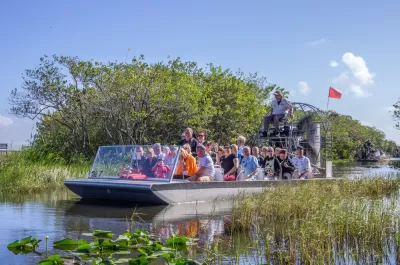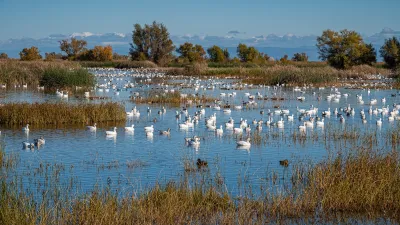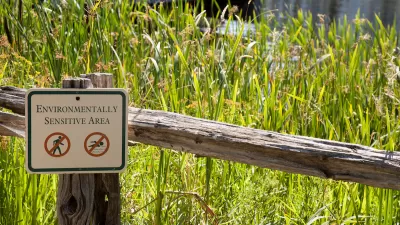An 'unprecedented' investment of more than one billion dollars will go toward efforts to restore and conserve the fragile and troubled South Florida ecosystem.

A $1.1-billion federal investment in conservation and rehabilitation efforts in the Florida Everglades will help local authorities improve water quality and eliminate sources of pollution that are destroying the ecosystem, reports Amy Green. In addition to its value as a unique and biodiverse ecosystem, the Everglades is "a watershed responsible for the drinking water of more than 8 million Floridians."
"The money also is intended to fortify the Everglades against the rising seas and other impacts of climate change. The funding is part of the infrastructure measure President Joe Biden signed into law in November and represents the single largest investment ever in Everglades restoration, according to the White House."
"Conspicuously missing from the list is one that is considered crucial in restoring the Everglades’ historic flow south: a large reservoir south of Lake Okeechobee in the Everglades Agricultural Area. That reservoir is aimed at alleviating harmful discharges east and west from Lake Okeechobee to fragile coastal estuaries like the Indian River Lagoon, which in recent years triggered widespread blooms of toxic algae." According to Green, state leaders have expressed outrage at the omission, but "The U.S. Army Corps of Engineers, the federal agency overseeing Everglades restoration, answered Mast’s criticism by saying that the corps remains committed to the reservoir, and construction is scheduled to begin this year."
FULL STORY: Biden’s Infrastructure Bill Includes an Unprecedented $1.1 Billion for Everglades Revitalization

Trump Administration Could Effectively End Housing Voucher Program
Federal officials are eyeing major cuts to the Section 8 program that helps millions of low-income households pay rent.

Planetizen Federal Action Tracker
A weekly monitor of how Trump’s orders and actions are impacting planners and planning in America.

Ken Jennings Launches Transit Web Series
The Jeopardy champ wants you to ride public transit.

Washington Legislature Passes Rent Increase Cap
A bill that caps rent increases at 7 percent plus inflation is headed to the governor’s desk.

From Planning to Action: How LA County Is Rethinking Climate Resilience
Chief Sustainability Officer Rita Kampalath outlines the County’s shift from planning to implementation in its climate resilience efforts, emphasizing cross-departmental coordination, updated recovery strategies, and the need for flexible funding.

New Mexico Aging Department Commits to Helping Seniors Age ‘In Place’ and ‘Autonomously’ in New Draft Plan
As New Mexico’s population of seniors continues to grow, the state’s aging department is proposing expanded initiatives to help seniors maintain their autonomy while also supporting family caregivers.
Urban Design for Planners 1: Software Tools
This six-course series explores essential urban design concepts using open source software and equips planners with the tools they need to participate fully in the urban design process.
Planning for Universal Design
Learn the tools for implementing Universal Design in planning regulations.
Heyer Gruel & Associates PA
Ada County Highway District
Institute for Housing and Urban Development Studies (IHS)
City of Grandview
Harvard GSD Executive Education
Toledo-Lucas County Plan Commissions
Salt Lake City
NYU Wagner Graduate School of Public Service





























